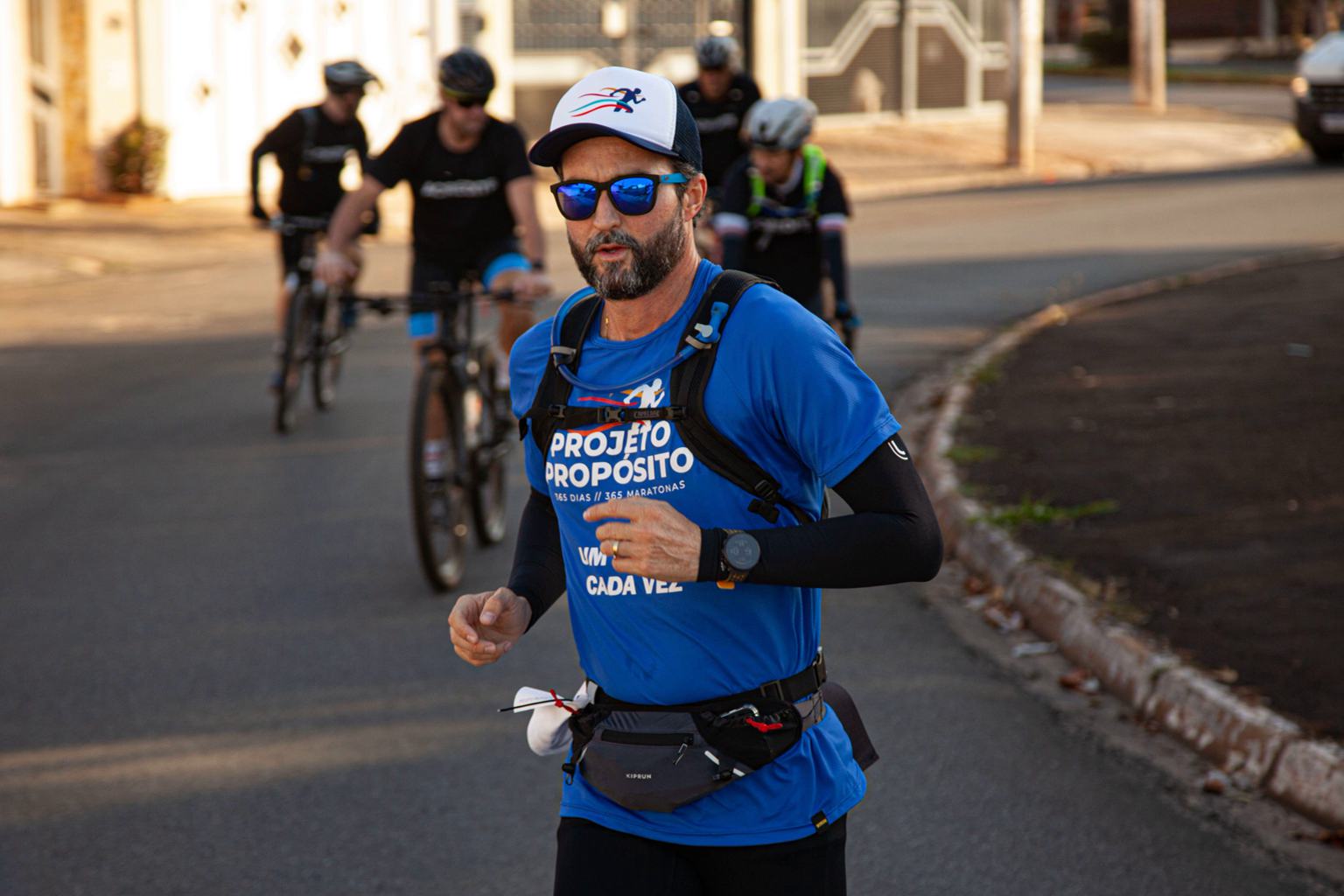Running 366 marathons in a row is something almost unimaginable. Imagine dedicating yourself to running 26.2 miles every single day for an entire year and then some. What happens to your body, and especially to your heart, when pushed to such an extreme? Hugo Farias, a 45-year-old former executive, dared to find out—and his journey reveals inspiring lessons about discipline, endurance, and human potential.
How running 366 marathons tested body and mind
Hugo’s story began in the corporate world, where he worked for more than two decades managing big technology contracts. But one day, a deep feeling of dissatisfaction sparked a bold idea. “Am I really here just to do the same routine for 35 or 40 years?” he wondered. Inspired by Brazilian ocean rower Amir Klink, who famously crossed the South Atlantic in 1984, Hugo decided to challenge himself, but instead of rowing, he chose to run.
His goal? Run one full marathon every day for 366 days—not just to break records, but to inspire others and rediscover his own limits. While he wasn’t a seasoned runner—he had only completed one marathon before—he began preparing meticulously. Over eight months, Hugo organized everything from training schedules to nutritional plans and assembled a team that included doctors, physical therapists, a sports psychologist, and the Institute of the Heart (InCor) in São Paulo for medical supervision.
The project kicked off on August 28, 2023. Across 366 days, Hugo logged an incredible 9,671 miles. He faced cold mornings, rain, traffic, and the challenge of staying motivated. Afterall, running more than 26 miles every day requires not only physical strength but huge mental stamina. “I knew I could get hurt or face family issues,” Hugo said, reflecting on the risks. “So I planned for every scenario.”
Scientific insights reveal surprising heart resilience
What sets Hugo’s journey apart is not just its scale, but the comprehensive scientific study that tracked his cardiovascular health. Maria Janieire Alves, a cardiologist involved in the research, described the project as groundbreaking. “This was something never done before,” she said. Hugo underwent monthly stress tests measuring oxygen consumption, heart rate, and cardiopulmonary capacity, along with echocardiograms every three months to monitor the heart’s structure and function.
The results? After 366 marathons, there was no indication of heart damage or myocardial injury. This was a key discovery. The heart adapted to the extreme volume of exercise, provided the intensity remained moderate. Indeed, Hugo ran with an average heart rate of 140 beats per minute, roughly 70 to 80 percent of what is considered maximum for his age—a safe zone that balanced challenge and recovery.
Cardiologist Filippo Savioli, who was not involved in the study, noted the findings show the heart’s impressive ability to handle massive endurance, as long as the stress is within a controlled intensity range. “Pushing this volume at moderate intensity helped prevent pathological remodeling or dangerous heart changes,” he explained. This paints a hopeful picture for endurance enthusiasts but also comes with a caution: attempting similar feats without proper supervision is risky.
Lessons from a year of fatigue, injuries, and mental toughness
What struck me most about Hugo’s journey is the blend of grit and careful planning. He chose to run every race the same route in Americana, Sao Paulo, to maintain mental focus, hydration points, and inspire community involvement—more than 5,000 people ran alongside him at some point.
Running one marathon daily was far from easy. Hugo dealt with painful plantar fasciitis and pubalgia during the journey, injuries that forced him to slow to a walk for days while icing and rehabbing. He also endured health setbacks, like a five-day bout of severe diarrhea that caused him to lose nearly 9 pounds. His mental health was supported by a psychologist, acknowledging how anxiety and uncertainty come with such massive change.
From Hugo’s experience, one lesson stands clear: incredible physical feats are possible, but they demand more than just willpower. They require self-awareness, expert advice, and a willingness to respect your body’s signals.
Following his record-breaking feat, Hugo wrote a book titled “It’s never too late to write a new story.” He’s now preparing an even bigger challenge: running the entire length of the Americas, from Alaska’s Prudhoe Bay to Tierra del Fuego, covering 53 miles daily for 300 days. He hopes to inspire others through a documentary, showing that while you might not need to run a marathon every day, believing in your potential is key.
What do you think about running such an extreme challenge? Could you imagine pushing your body this far? Share your thoughts, experiences, or questions in the comments below. Let’s start a conversation about the limits of human endurance!

At 69 I am preparing for a half marathon so that gives me some inspiration as it’s too easy to say not at my age
Having had a layoff from running due to recurring injury for almost 15 years I am now getting back into it, having done a tough hill race, and then an ultra marathon of 50k last year at 60 years of age. Will be doing a few more next year and monitoring my training closely.